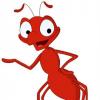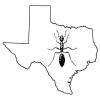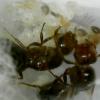I've always wondered about insect leg amputations, do they feel pain or stress? Or is it no difference as long as they can eat and function?
i found a half winged female running around on my driveway a couple days ago (half was there and the other half was eaten maybe)
Ant Queens found:
Solenopsis Invicta, Solenopsis xyloni, Brachymyrmex depilis/Sp, Myrmecocystus Mimicus, Pogonomyrmex barbatus,
Forelius pruinosus, Camponotus sayi, Dorymyrmex insanus, crematogaster ashmeadi,
----------------------------------------
Ant Queens i have going right now:
camponotus sayi, solenopsis invicta, Myrmecocystus Mimicus, Forelius pruinosus
Pogonomyrmex barbatus, and some others (no i.d.)
---------------------------------------
YouTube: AntsTexas
Facebook: https://www.facebook.com/cdockray1
Facebook page: AntsTexas




















